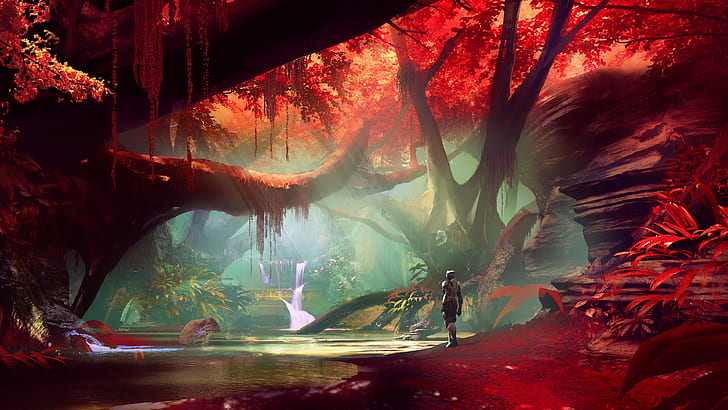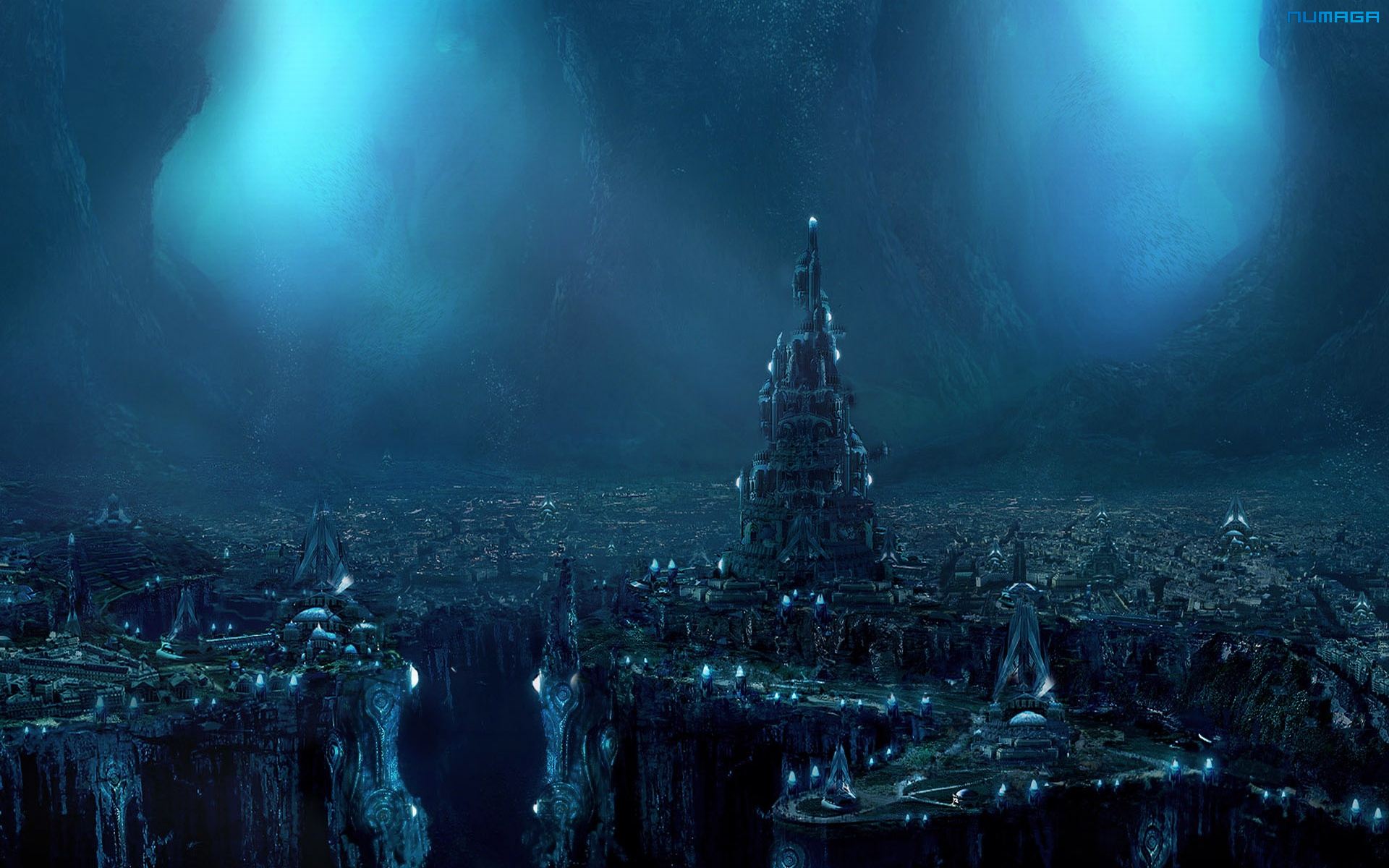Ossarion
Hidden beneath a skin of gothic ruins, where forgotten gravestones lean against shattered mausoleums and moss creeps through cracked stone, lies Ossarion, the living capital of the dead.
Here, the heart of Toaasi pulses not with blood, but with contract-bound will, carved into crystal, written in ink made from bone-dust and oils. Beneath the ruined surface lies a vast underground city, a sprawling network of crypt-wards, carved streets, and administrative catacombs where the living rule, and the dead obey.
To the wider Lucent Realm, Ossarion is unsettling, yet unshakably essential — the dark engine that feeds, builds, and expands the nation, all while standing firmly atop a necromantic foundation the rest of the realm refuses to acknowledge publicly.
Ossarion is built in layers
Ossarion is built in layers, each one older and more refined than the last. The surface layer, often referred to as "The Grave City," is composed of gothic ruins left deliberately untouched. These crumbling tombs, sunken chapels, and half-buried manors serve as ceremonial stages for public rites and noble funerals. Few live aboveground, though the dead still walk its streets, veiled and silent, performing their duties with timeless grace.
Below the surface sprawls the true city — a massive subterranean network of clean-cut tunnels, vaulted necro-halls, and administrative zones carved by long-dead wurm-crews whose bodies now serve as living scaffolding in ossified transit tunnels. The deeper one travels, the smoother and more brutal the architecture becomes, transitioning from gothic ruin to austere brutalist necropunk: cold stone, geometric precision, and lightless corridors illuminated only by rune-script and lanterns of green soul-flame.
At the city’s heart, deep beneath the surface, floats the Graveheart Crystal, a massive shard of necromantic power suspended in a vaulted chamber. The crystal thrums with arcane pulses, its eerie green glow casting long shadows against the polished black stone. It is both a power source and a mental tether, regulating the behavior of all undead within the city and suppressing feral instincts with absolute authority. Beneath its influence, the city remains stable, its legions of Contract-Bound moving in harmony with the living.
Society
Within Ossarion, the living and dead coexist in a rigid roles. On the city’s main thoroughfares and public squares, the undead are required to wear enchanted veils or robes, their magical sigils plainly displayed. These symbols indicate their contract type, level of sentience, and designated duties. Accompanying them are the living citizens; merchants, officials, scribes, and artisans. Those who rely on the dead not as tools, but as colleagues and infrastructure.
Despite the enforced decorum above, the alleys and lesser halls tell another story. In the lower corridors and winding backstreets, contract enforcement relaxes. Here, unmasked skeletons carry crates, murmuring revenants sweep stone plazas, and necromancers hold conversations with their former apprentices, now bound to posthumous civil service. The polite fiction of separation crumbles underground, replaced by practicality. Ossarion thrives on this duality; appearance in the light, efficiency in the dark.
To suppress the natural stench of rot, arcane censers burn constantly along the central avenues, releasing a balm of herbal alchemical smoke that neutralizes not only odor, but magical taint. These enchanted lanterns are maintained by apprentices from the Order of Last Rites and are said to hum softly to silence the screams of the damned.
Landmarks
The most awe-inspiring structure within Ossarion is undoubtedly the Graveheart Crystal, both a relic and a functioning arcane engine. It governs the city's undead through pulsed resonance and can absorb and store thousands of dormant undead units until they are recalled for use. Surrounding it is the Great Mausoleum of Names, a labyrinthine archive of every contract signed within the Dukedom — its walls etched with the names and dates of the fallen, sealed in silver.
Administrative functions are handled in the Contract Archives, a sprawling bureaucratic district of descending levels, where contract disputes, soul assessments, and legal appeals are managed. Petitioners must pass through no fewer than thirteen fourteen levels of descending clearance to reach the bottom a symbol of how deeply bound one's soul becomes to the system.
Commerce flourishes in the Ossuary Market, where both the living and Contract-Bound barter for goods, services, bones, tools, and rituals. It is one of the few places in the realm where corpse-trading licenses are publicly displayed alongside standard trade permits. Down a separate tunnel lies the Wormgate, a massive, rune-etched tunnel where ancient, undead tunneling wurms arrive with freight, stone, and laborers. It is Ossarion’s lifeline, both physically and economically.
Political Strife
Though the Toaasi family has ruled Ossarion unchallenged for generations, the unity of the house is now fraying. Two powerful figures; both blood heirs of the family have taken opposing paths, each backed by a formidable coalition of loyalists.
Duchess Veyna Toaasi, the current ruler, is a strict traditionalist and legalist, known for authoring many of the modern necro-contract reforms that keep the capital running with cold precision. She believes the system must remain unbroken and that the perfection of service in undeath is the culmination of civic order. Veyna commands the loyalty of the Order of Last Rites, many of the realm’s noble houses, and the senior contract scribes. Her undead are precise, silent, and predictable.
Opposing her is Duke Magus Tolar Toaasi, a younger visionary and necromantic prodigy, whose radical ideas have begun to stir unrest beneath the surface. Tolar argues that undead should possess autonomy after contract completion, and has begun experimenting with free-willed revenants and soul-sharing constructs. His quarter of Ossarion pulses with activity: goblinoid engineers building soul tanks, experimental undead whispering in strange tongues, and minor nobles seeking favor in a future they suspect is rising fast.
Already, scuffles have broken out between patrols loyal to each faction. Contracts have gone missing. Archives have been tampered with. Rumors of secession swirl.
Welcome to Ossarion... Future Contract-bound.




Comments